Welcome to Nipomo, a beautiful region located on the Central Coast of California! This area is incredibly popular among birdwatchers due to the wide variety of bird species that can be found here.
From the graceful Bald Eagle to the vibrant American Goldfinch, Nipomo is home to a diverse array of birds that can be observed in their natural habitat.
Whether you’re a seasoned birdwatcher or just beginning to explore the wonderful world of birds, Nipomo is a great place to start. With its diverse bird population and scenic landscape, Nipomo is sure to provide a unique and enjoyable bird-watching experience.
1. Anna’s Hummingbird
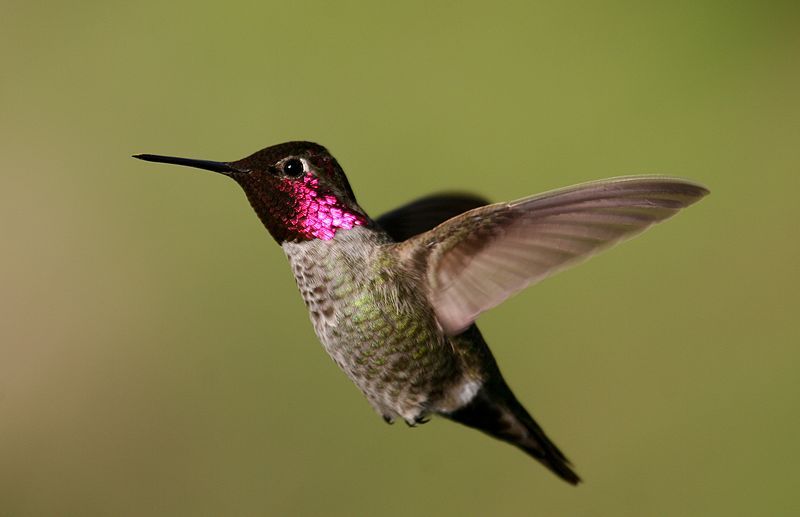
Anna’s hummingbird is a species of bird belonging to the Trochilidae family. It is native to western parts of North America, with its original breeding range being in northern Baja California and Southern California.
The species was named after Anna Masséna, the Duchess of Rivoli. Anna’s hummingbird is a medium-sized bird species, with vibrant green and red plumage. Despite its beauty, it is a very shy bird and prefers to stay away from people.
It is known to be quite territorial, aggressively defending its territory from other hummingbirds. Its diet consists mainly of nectar and small insects, which it obtains from flowers and insects.
The Anna’s hummingbird has experienced a rapid expansion of its population in recent years, due to the availability of food sources from human habitats.
It has been seen in areas of the United States that it was not previously known to inhabit, such as Arizona, New Mexico, and Texas.
This is likely due to the introduction of feeders that are kept filled with sugary water, as well as the availability of flowering shrubs and trees in gardens. Anna’s hummingbird is a fascinating species that is enjoyed by many bird watchers.
It is a symbol of hope and resilience, as its population has been able to expand and thrive despite the challenges of the changing climate.
| Kingdom | Animalia |
| Phylum | Chordata |
| Class | Aves |
| Clade | Strisores |
| Order | Apodiformes |
| Family | Trochilidae |
| Genus | Calypte |
| Species | C. anna |
2. Bald Eagle
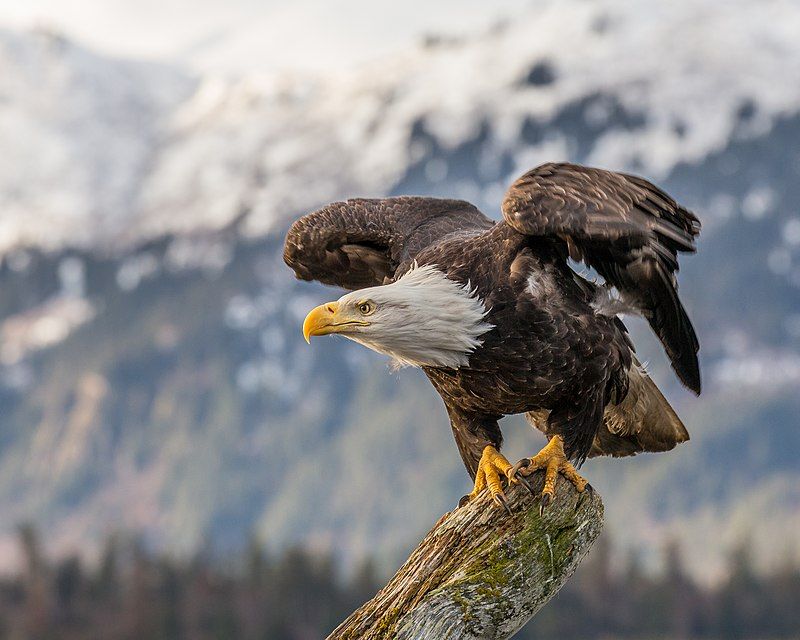
The bald eagle is an iconic bird of prey in North America. It is a type of sea eagle and is closely related to the white-tailed eagle, which can be found in the Palearctic region of Europe and Asia.
The bald eagle has two distinct subspecies, which vary in size and color, as well as the location they inhabit. Bald eagles are found throughout North America, from Alaska down to northern Mexico.
Their wingspan can reach up to seven feet, making them one of the largest birds of prey in the United States. They have a distinctive black and white feathered appearance, with a white head and brown body.
The males and females look similar, although the females are usually larger. Bald eagles are known to feed on a variety of animals, including fish, small mammals, and carrion. They hunt by soaring high up in the sky and then diving down quickly to catch their prey.
They are also scavengers, and they will eat food that has been discarded by humans, such as scraps from fishing boats. Bald eagles play an important role in the ecology of North America, as they help to keep the populations of their prey in check.
They are also important to the economy, as they are harvested for their feathers, which are often used in ceremonial dress. The bald eagle is a protected species in the United States, and it is illegal to kill them or disturb their nests.
The population of bald eagles has been increasing in recent years, and they are a symbol of American strength and freedom.
| Kingdom | Animalia |
| Phylum | Chordata |
| Class | Aves |
| Order | Accipitriformes |
| Family | Accipitridae |
| Genus | Haliaeetus |
| Species | H. leucocephalus |
3. Great Horned Owl
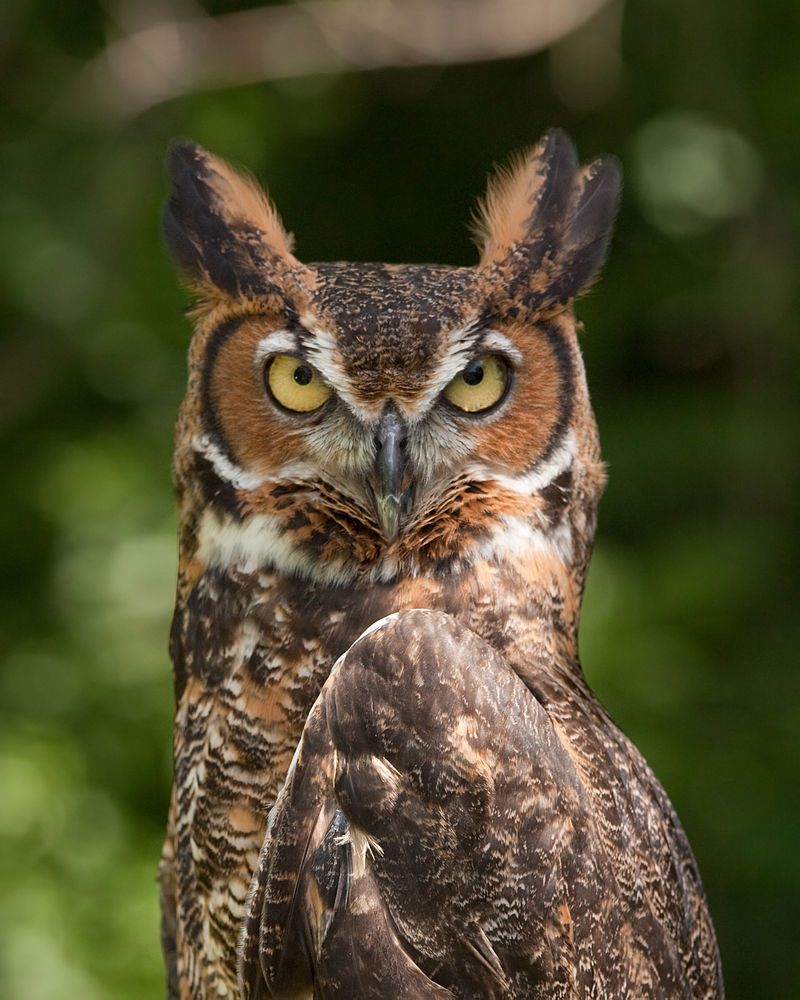
The great horned owl is a magnificent bird native to the Americas. It is an incredibly adaptable species, with a range that stretches from the Arctic tundra to the tropics.
Not only is it the most widely distributed true owl in the Americas, but it is also known by several different names, including the tiger owl and the hoot owl. The great horned owl is a large bird with a distinctive facial disc and two prominent ear tufts.
Its plumage is usually a mottled brown and white, although some variations can be found across its range. It has strong talons and a sharp curved beak, which it uses to catch its prey, which consists of small animals such as mice and voles.
The great horned owl is an intelligent hunter. It is very patient and will wait in an ambush for its prey, often camouflaging itself against tree trunks or logs. It is also nocturnal, which means it prefers to hunt at night. The great horned owl is also an extremely vocal bird.
It is known for its deep hooting call, which is used to communicate with other owls and to mark its territory. While the great horned owl can be found in many different habitats, it prefers mature forests with high trees for roosting and nesting.
Overall, the great horned owl is an impressive species. Its adaptability, wide range, and nocturnal hunting habits make it a formidable predator. It is an important species in its ecosystem, helping to keep the small mammal population in check.
| Kingdom | Animalia |
| Phylum | Chordata |
| Class | Aves |
| Order | Strigiformes |
| Family | Strigidae |
| Genus | Bubo |
| Species | B. virginianus |
4. Northern Flicker
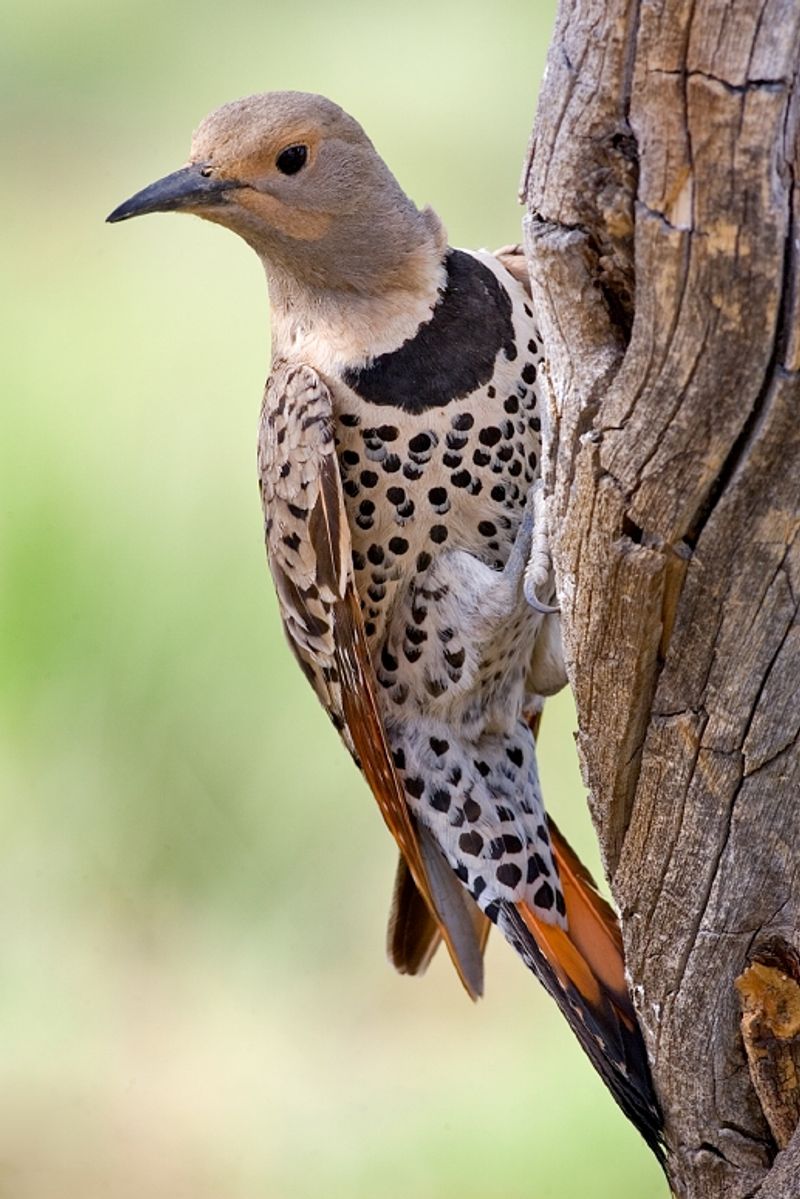
The northern flicker, also known as the common flicker, is a species of woodpecker found in North America, Central America, Cuba, and the Cayman Islands. It is a medium-sized bird that belongs to the woodpecker family.
It is quite distinct from other woodpeckers due to its unique plumage, which includes a white rump, a black bib, and a brownish-red back. Its wings are also barred and spotted with black and white.
One of the most interesting facts about this species is that it is one of the few woodpecker species that migrate. During the cold winter months, flickers migrate south to warmer areas.
This makes them one of the few woodpecker species that can be seen in both North America and Central America. The northern flicker is also an omnivore, meaning it feeds on both plants and animals. Its diet includes insects, fruits, and even nuts.
It is also known to eat small birds, eggs, and lizards. With its distinctive plumage and interesting behavior, the northern flicker is an amazing bird to observe.
| Kingdom | Animalia |
| Phylum | Chordata |
| Class | Aves |
| Order | Piciformes |
| Family | Picidae |
| Genus | Colaptes |
| Species | C. auratus |
5. Red-Tailed Hawk
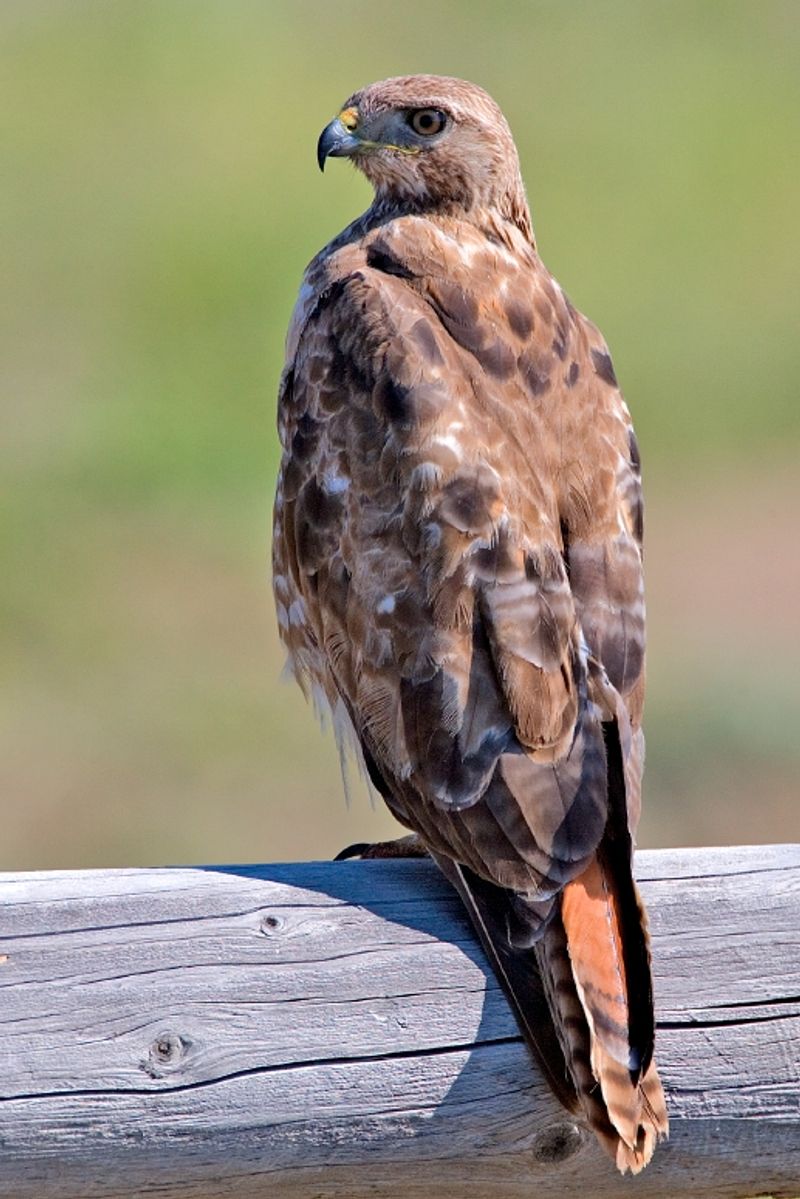
The red-tailed hawk is an impressive bird of prey that is native to North America.
It has a wide range that stretches from the interior of Alaska and northern Canada all the way down to Panama and the West Indies, making it one of the most widely distributed birds of prey in the world.
This bird is part of the Buteo genus and is one of the most common species within this genus in North America. It is a large bird with a wingspan of up to four feet and a length of up to two feet. It has a distinctive reddish-brown tail, which gives it its name.
Its body is mainly brown with lighter and darker patterns, and its head is white with a dark mask.
It has powerful talons and a sharp curved beak, which it uses to catch its prey. The red-tailed hawk is an opportunistic predator, meaning it will feed on whatever prey is most readily available. This includes small mammals, reptiles, amphibians, and other birds.
It may also consume carrion, which is the flesh of dead animals. Its diet is varied and depends on what is available in its home range. The red-tailed hawk is an impressive bird with a wide range and impressive hunting skills.
It is one of the most common birds of prey in North America, and its presence is an important part of the local ecosystem.
| Kingdom | Animalia |
| Phylum | Chordata |
| Class | Aves |
| Order | Accipitriformes |
| Family | Accipitridae |
| Genus | Buteo |
| Species | B. jamaicensis |
6. Allen’s Hummingbird
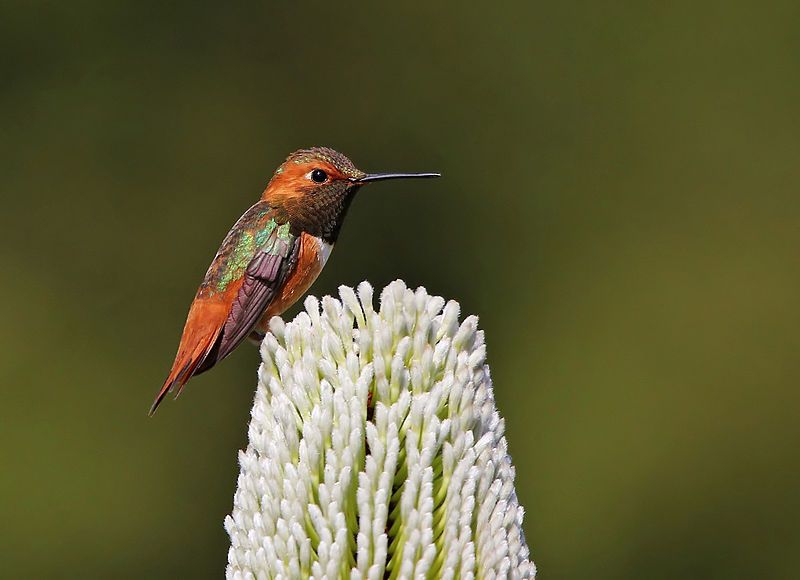
Allen’s hummingbird is a species of small bird that is easily recognizable due to its vibrant coloring. It is predominantly green and white on its back and sides, and its underside is a beautiful shade of red. It has a long, thin beak and a short, rounded tail.
The species is native to the western United States and is one of seven species in the genus Selasphorus. This genus includes all of the hummingbirds that are found in the western United States.
Allen’s hummingbird breeds in the western United States, primarily in California and Oregon. It is a migratory species and can be found in parts of Mexico, Arizona, and New Mexico during the winter.
The species nests in woodlands and shrublands, and prefers areas with open understory and tall trees. It feeds on nectar, insects, and spiders, and can feed up to seven times a day.
The species is considered to be of least concern by the IUCN, though its population has been declining due to habitat loss. Conservation efforts are underway to help protect the species and its habitat.
These efforts include creating protected areas, restoring habitats, and controlling invasive species. The species is also protected under the U.S. Migratory Bird Act.
| Kingdom | Animalia |
| Phylum | Chordata |
| Class | Aves |
| Clade | Strisores |
| Order | Apodiformes |
| Family | Trochilidae |
| Genus | Selasphorus |
| Species | S. sasin |
7. Turkey Vulture
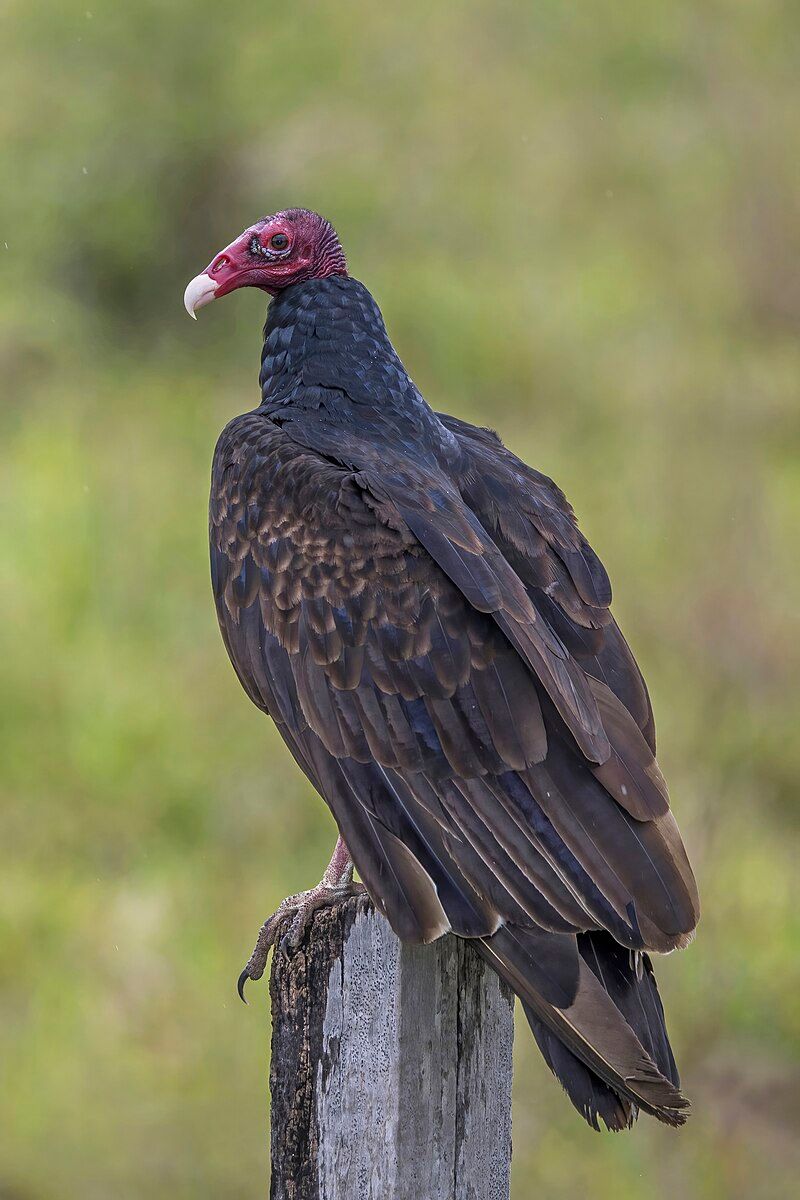
The turkey vulture is a large bird found all throughout the Americas, from Canada in the north to the southern tip of South America. It is one of three species that belong to the Cathartes genus, which is part of the Cathartidae family.
This bird is easily recognizable, with its long wings and bald red head. The turkey vulture is a scavenger, meaning it feeds on dead animals. It has a keen sense of smell which helps it find carrion which other animals cannot.
This is beneficial for the environment, as it helps keep the environment clean by consuming dead animals.The turkey vulture is a very social bird, often seen in groups soaring in the sky. They communicate with each other through a variety of calls and postures.
They also have a tendency to roost in groups, often in trees or on the ground. Due to its wide range of habitats, the turkey vulture is a very adaptable species. It can survive in a variety of climates and habitats, including deserts, forests, grasslands, and even urban areas.
This makes it a very successful species, and it is considered to be of least concern on the International Union for Conservation of Nature red list. Overall, the turkey vulture is a fascinating bird, with its distinctive appearance and behaviour.
It is an important species in the Americas, and its adaptability ensures its continued success.
| Kingdom | Animalia |
| Phylum | Chordata |
| Class | Aves |
| Order | Accipitriformes |
| Family | Cathartidae |
| Genus | Cathartes |
| Species | C. aura |
8. Golden Eagle
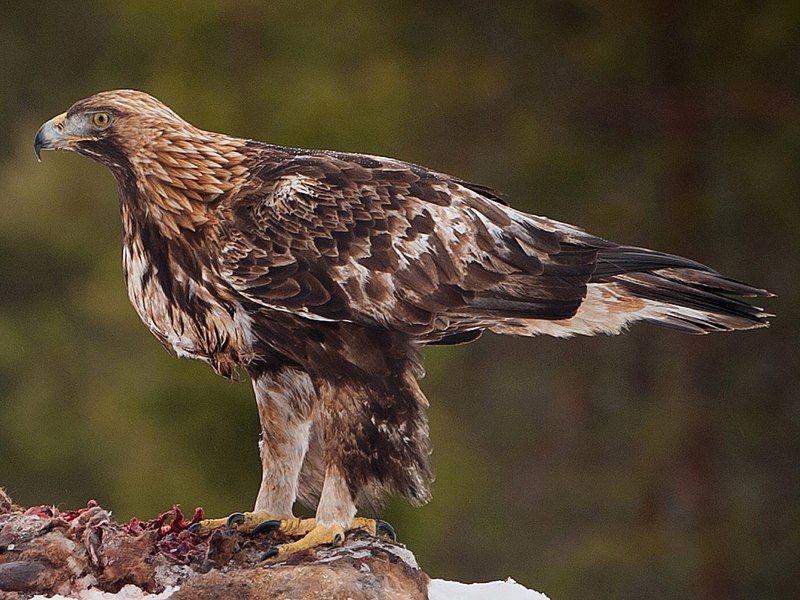
The golden eagle is a majestic bird of prey that lives in the Northern Hemisphere. It is the most widely distributed species of eagle in the world, found in a variety of habitats including mountains, forests, grasslands, and deserts.
The golden eagle belongs to the Accipitridae family, which contains over 200 species of eagles, hawks, and other raptors. These birds of prey have powerful, sharp talons that they use to catch and kill their prey.
They are also skilled hunters, able to spot prey from a very far distance. They have excellent eyesight and hearing that help them locate and hunt their prey.
The golden eagle is one of the most recognizable birds of prey in the Northern Hemisphere, easily distinguished by its large size, broad wings, and striking golden-brown plumage.
It is an important part of the natural ecosystem, helping to maintain a balance between prey and predators.
| Kingdom | Animalia |
| Phylum | Chordata |
| Class | Aves |
| Order | Accipitriformes |
| Family | Accipitridae |
| Genus | Aquila |
| Species | A. chrysaetos |
9. Mourning Dove
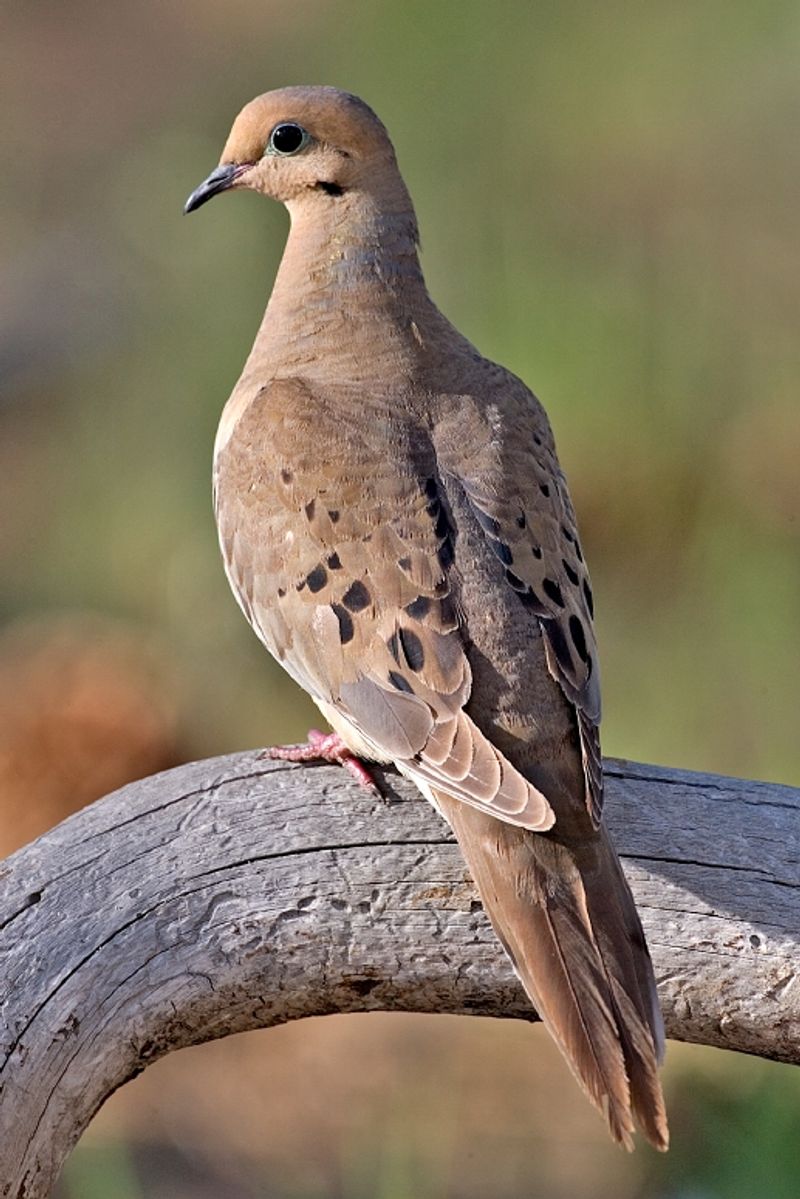
The mourning dove is a species of bird that belongs to the Columbidae family. It is native to the United States and is also known by a few other names, such as the American mourning dove, the rain dove, and colloquially as the turtle dove.
The mourning dove’s scientific name, Zenaida macroura, alludes to its former name, the Carolina pigeon or Carolina turtledove. The mourning dove is a medium-sized bird, typically between 9-13 inches in length and weighing between 3-5 ounces.
It is grayish-brown in color with a black and white-tipped tail and pinkish feet. Its wingspan is typically between 15-18 inches. The mourning dove is usually found in open areas such as fields, parks, and gardens.
It prefers to feed on the ground, where it will find grains, seeds, and other small items. Its diet also includes insects and fruits. The mourning dove is also well-known for its distinctive call, which is a long, low, mournful coo.
The sound of the mourning dove has been described as one of the most soothing sounds in nature.
| Kingdom | Animalia |
| Phylum | Chordata |
| Class | Aves |
| Order | Columbiformes |
| Family | Columbidae |
| Genus | Zenaida |
| Species | Z. macroura |
10. Burrowing Owl
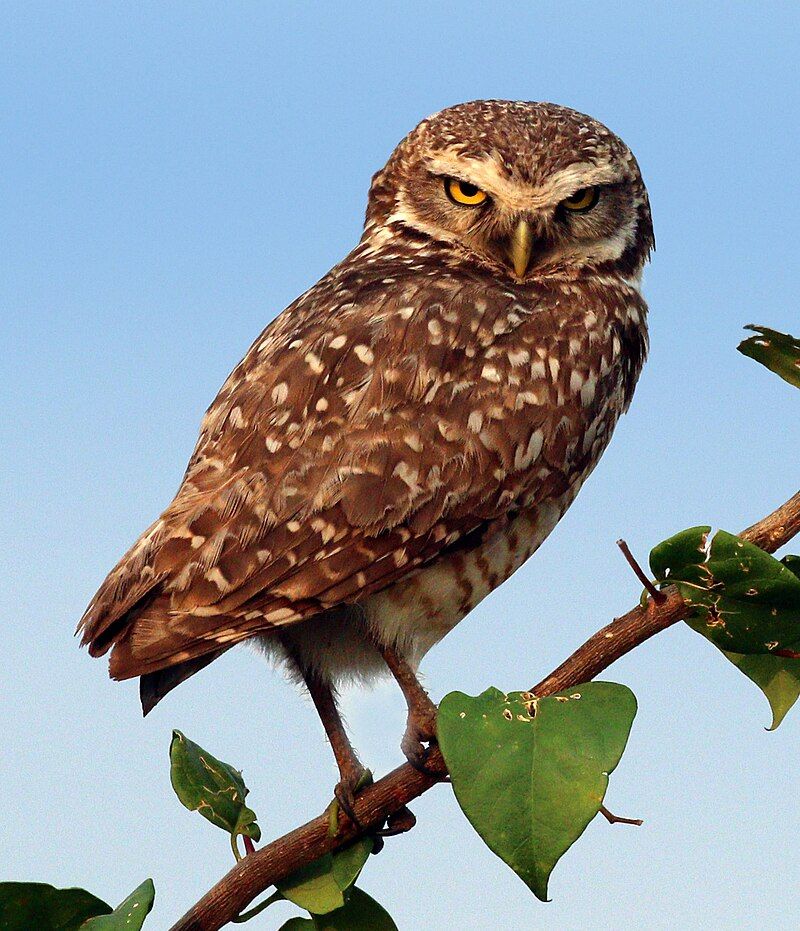
The burrowing owl, scientifically known as Athene cunicularia, is a species of small owl commonly found in open, dry landscapes of North and South America. It is also referred to as the “shoco”, a name of indigenous South American origin.
These owls are distinguished by their long legs and small size, which allows them to fit into their burrows and nest underground.
They can be found in a variety of habitats, including grasslands, rangelands, agricultural areas, deserts, and any other open, dry areas with minimal vegetation.
This species prefers areas with a few scattered trees or shrubs for perching and nesting, as well as short grass for hunting. The burrowing owl has adapted to life in its environment in a few unique ways.
To defend their burrows, these owls will often leave piles of animal bones outside the entrance. This serves as a warning to potential predators, and can also attract small animals to the burrow for them to eat.
Additionally, these owls do not migrate but instead remain in their burrows all year round, relying on the warmth of the earth to regulate their body temperature. The burrowing owl is an important species in its ecosystem, as it helps control rodent populations.
It faces a few threats, including habitat loss and degradation due to human activities, such as urbanization and agricultural practices. Conservation efforts are underway to protect these owls and their habitats.
| Kingdom | Animalia |
| Phylum | Chordata |
| Class | Aves |
| Order | Strigiformes |
| Family | Strigidae |
| Genus | Athene |
| Species | A. cunicularia |
11. Great Blue Heron
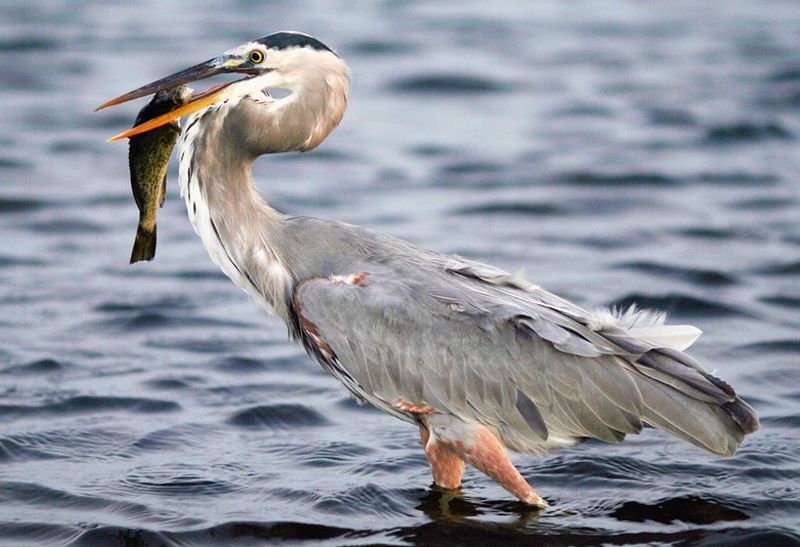
The great blue heron is a majestic and unique bird species. It belongs to the heron family Ardeidae, which is native to much of North and Central America, parts of South America, the Caribbean, and the Galápagos Islands.
It is a large wading bird that is often seen near the shores of open water and in wetlands. Its long, slender neck and large wingspan make it a stunning sight in nature. The great blue heron is a carnivorous bird that hunts for fish, frogs, and insects near the shoreline.
It has a long straight bill and webbed feet which it uses to help it wade through the water while searching for food. Its long legs help it move swiftly and quietly through the water, allowing it to catch its prey by surprise.
The great blue heron is a beautiful bird that can be seen standing tall and proud in its natural habitat. It has a grey-blue body and long, black legs. Its wings are grey-black and its chest is white.
The great blue heron is a symbol of beauty and grace, and its presence is often a welcome sight for birdwatchers. The great blue heron is an important part of many ecosystems, as it helps to maintain a healthy balance of fish and other wildlife in the area.
Its presence is beneficial to the environment and helps to ensure the survival of other species. As a species of conservation concern, the great blue heron needs to be protected in order to ensure its continued existence.
| Kingdom | Animalia |
| Phylum | Chordata |
| Class | Aves |
| Order | Pelecaniformes |
| Family | Ardeidae |
| Genus | Ardea |
| Species | A. herodias |
12. House Finch
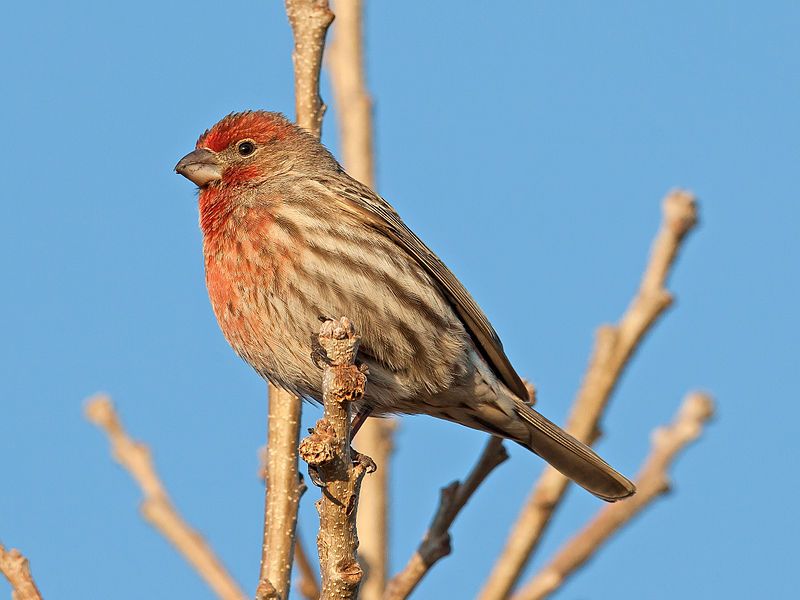
The house finch is a species of bird that belongs to the finch family Fringillidae. It is native to western North America but has been introduced to the eastern parts of the continent and Hawaii.
The species is part of the genus Haemorhous, which also includes two other American rosefinches. The house finch is a small bird, typically with brown, gray, or yellow feathers. It has a short, conical bill and a long tail.
It is a seed-eating bird, usually found in gardens, parks, and open fields. The house finch is an important part of the local ecology, playing a role in the pollination of flowers and dispersing of seeds.
It is also a popular backyard bird, often seen perched on bird feeders and window ledges. The house finch is a common sight in many parts of North America, and its presence serves as a reminder of the beauty and diversity of the natural world.
| Kingdom | Animalia |
| Phylum | Chordata |
| Class | Aves |
| Order | Passeriformes |
| Family | Fringillidae |
| Genus | Haemorhous |
| Species | H. mexicanus |
13. American Robin
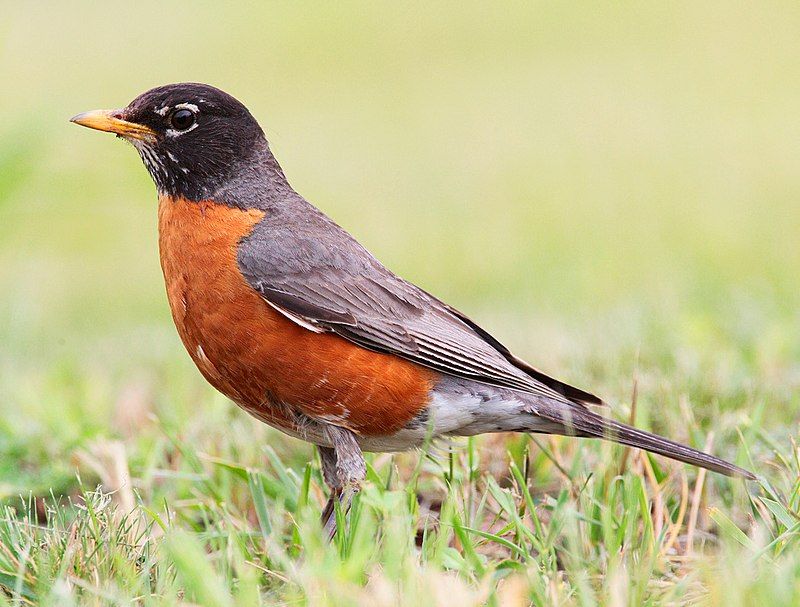
The American robin is a migratory bird belonging to the true thrush genus and Turdidae family, which is part of the wider thrush family. It is named after the European robin due to its reddish-orange breast, although the two species are not actually related.
The European robin is part of the Old World flycatcher family, which is a completely different family from the American robin. The American robin is a common sight in North America, and it is known for its wide variety of songs.
It is a migratory bird, meaning it will fly south in the winter and north in the summer in search of food and more hospitable climates. The American robin has a distinct reddish-orange breast, which is one of the reasons why it is named after the European robin.
The American robin is a beneficial species that helps to control insect populations, disperse seeds, and provide food for many other animals.
Its ability to migrate long distances helps it find a variety of food sources and habitats, which in turn helps to maintain the healthy ecosystems of North America.
| Kingdom | Animalia |
| Phylum | Chordata |
| Class | Aves |
| Order | Passeriformes |
| Family | Turdidae |
| Genus | Turdus |
| Species | T. migratorius |
14. Band-Tailed Pigeon
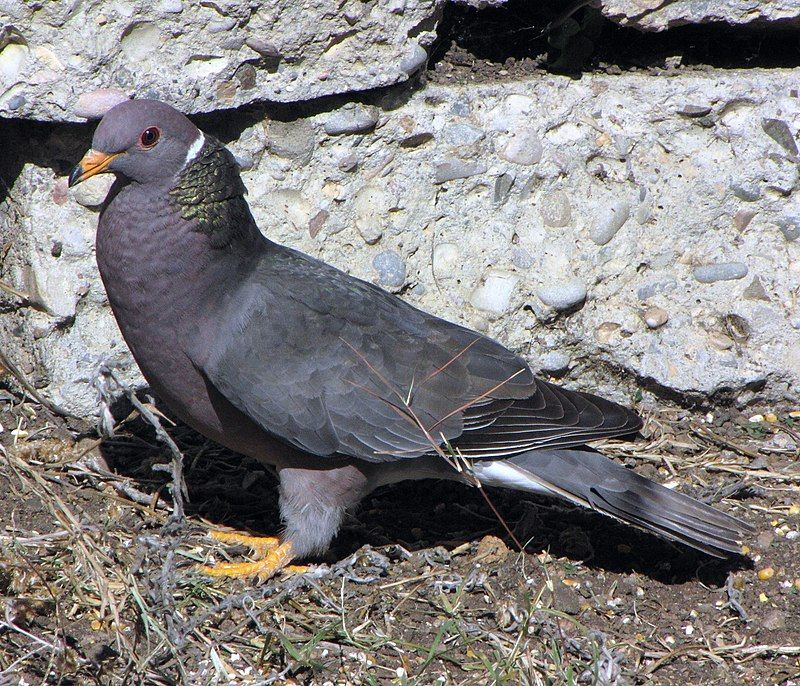
The band-tailed pigeon is a species of bird that lives in the Americas. It is of medium size and is closely related to the Chilean pigeon and the ring-tailed pigeon. These three species form a clade of Patagioenas, which refers to a group of birds that share certain features.
These features include a terminal tail band and iridescent plumage on their necks. The terminal tail band is a distinctive marking that can be seen on the tail of these birds.
The iridescent plumage is a shimmering effect on the neck, which is usually seen in different shades of purple and green. This coloration is believed to be a form of communication between birds of the same species.
All three species of pigeons that make up the clade of Patagioenas have evolved to survive in different parts of the Americas, and they play an important role in their respective ecosystems.
| Kingdom | Animalia |
| Phylum | Chordata |
| Class | Aves |
| Order | Columbiformes |
| Family | Columbidae |
| Genus | Patagioenas |
| Species | P. fasciata |
15. Western Bluebird
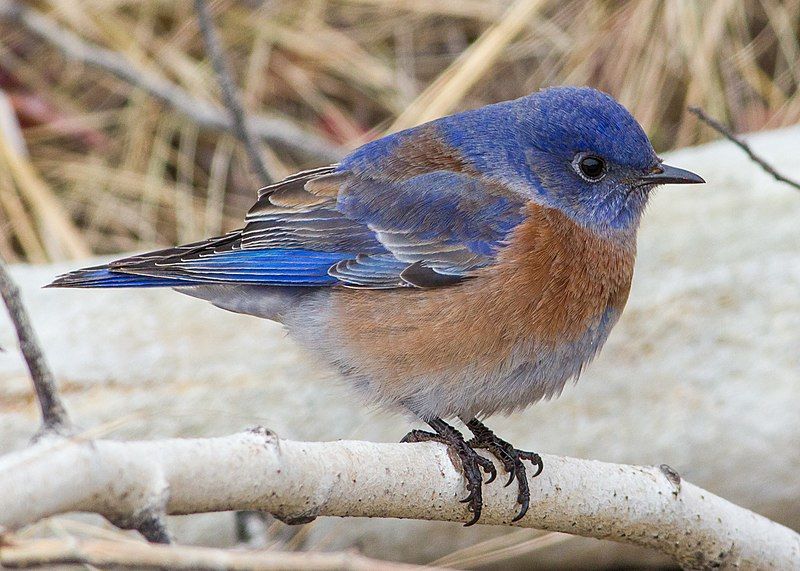
The western bluebird is a small bird native to North America. It is a member of the thrush family, a group of passerine birds characterized by their rounded wings and powerful flight. The western bluebird is typically found in open woodlands, meadows, and orchards.
It is brownish-blue in color, with a white belly and reddish-brown breast. Males have a bright blue head and back, while females have a gray-blue head and back. The bird typically eats insects and berries and builds nests in cavities, either natural or artificial.
The western bluebird is considered a species of special concern due to habitat loss and competition with other birds. However, conservation efforts have been successful in restoring the species in some areas.
| Kingdom | Animalia |
| Phylum | Chordata |
| Class | Aves |
| Order | Passeriformes |
| Family | Turdidae |
| Genus | Sialia |
| Species | S. mexicana |
16. Rufous Hummingbird
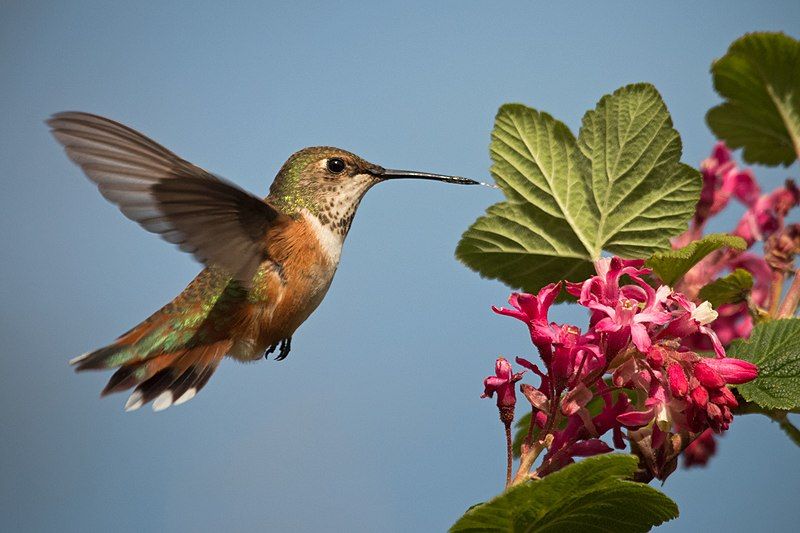
The rufous hummingbird is a small bird found in the genus Selasphorus. It measures 8 cm in length and has a long, straight, and slender bill. These birds are known for their impressive flying skills and can travel up to 2,000 miles during their migratory journeys.
This is an incredible feat, considering the size of the bird. These hummingbirds have an incredible ability to conserve energy while flying long distances, allowing them to travel far distances with relative ease.
This species has adapted to many different climates and habitats, allowing it to thrive in areas throughout the world.
The rufous hummingbird is a species of hummingbird that is truly remarkable, both in terms of its unique physical characteristics and its remarkable flight ability.
| Kingdom | Animalia |
| Phylum | Chordata |
| Class | Aves |
| Clade | Strisores |
| Order | Apodiformes |
| Family | Trochilidae |
| Genus | Selasphorus |
| Species | S. rufus |
17. Black Phoebe
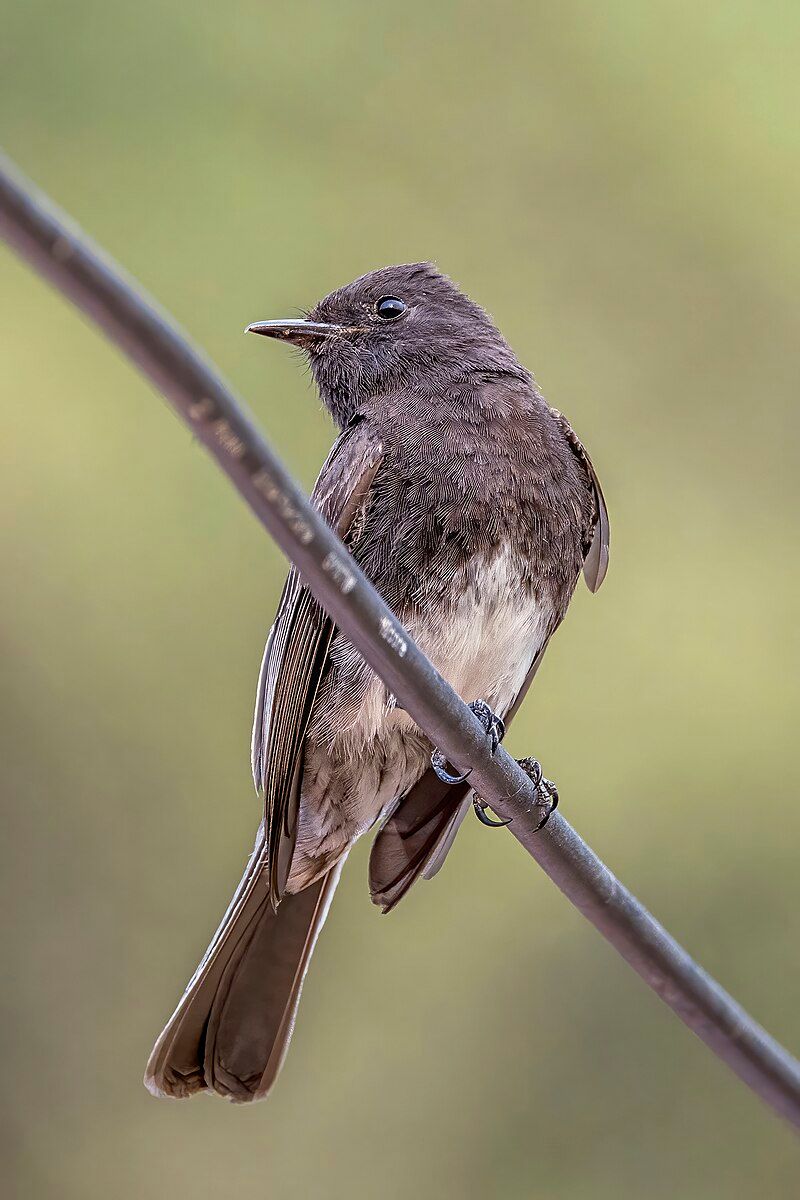
The black phoebe is a type of bird that belongs to the tyrant-flycatcher family. It is native to the regions of southwest Oregon and California, as well as Central and South America.
This bird is known to remain in its home range throughout the year, and only a few northern populations tend to migrate. In comparison to other birds in its genus, the black phoebe migrates less.
| Kingdom | Animalia |
| Phylum | Chordata |
| Class | Aves |
| Order | Passeriformes |
| Family | Tyrannidae |
| Genus | Sayornis |
| Species | S. nigricans |
18. California Quail
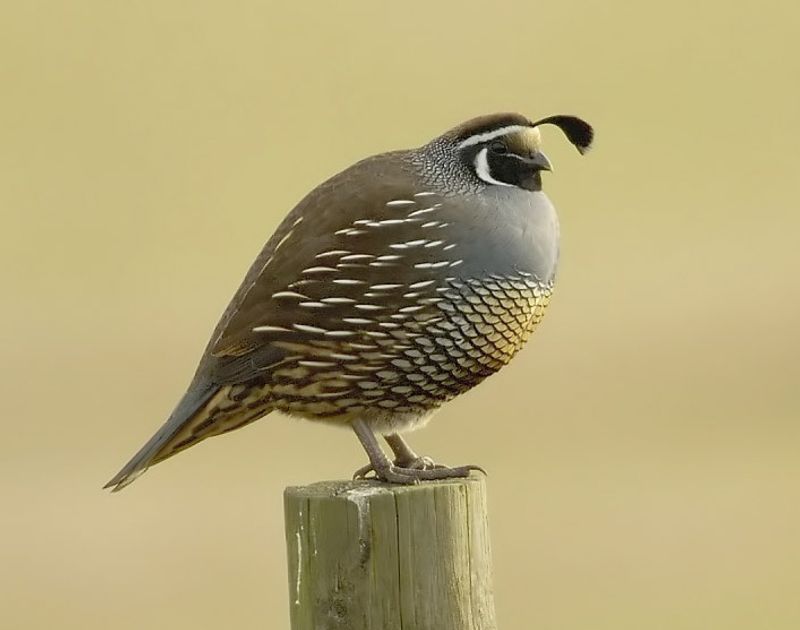
The California quail, also known as the California Valley quail or Valley quail, is a small ground-dwelling bird found in the New World quail family. These birds have a distinct physical feature, a curving crest or plume, made of six feathers, that droops forward.
The color of the crest varies between males and females, with males having a black plume and females having a brown plume. The flanks of the bird are brown in color with white streaks running down them.
The California quail is a unique-looking bird, with its distinctive crest and striking coloring. This bird is a good example of the variety and beauty that can be found in nature.
The California quail has adapted over time to its environment, making it well-suited to the conditions of the region. In addition to its physical features, the California quail also has a distinct call, which is a loud, rapid “chick-a-dee-dee-dee”.
This call is used to communicate with other members of the species and is a distinct trait of the California quail. The California quail is an important species to the local ecosystem.
These birds feed on a wide variety of plants and insects and are important for controlling the population of these pests. In addition, California quail are a popular game bird and are hunted for sport and food. As such, they are important to the local economy.
Overall, the California quail is an important species to the local ecosystem and economy. With its striking appearance and distinct call, this bird is an iconic species of the region.
The California quail is a beautiful example of the wonders of nature and is an important part of the local environment.
| Kingdom | Animalia |
| Phylum | Chordata |
| Class | Aves |
| Order | Galliformes |
| Family | Odontophoridae |
| Genus | Callipepla |
| Species | C. californica |
19. Barn Owl
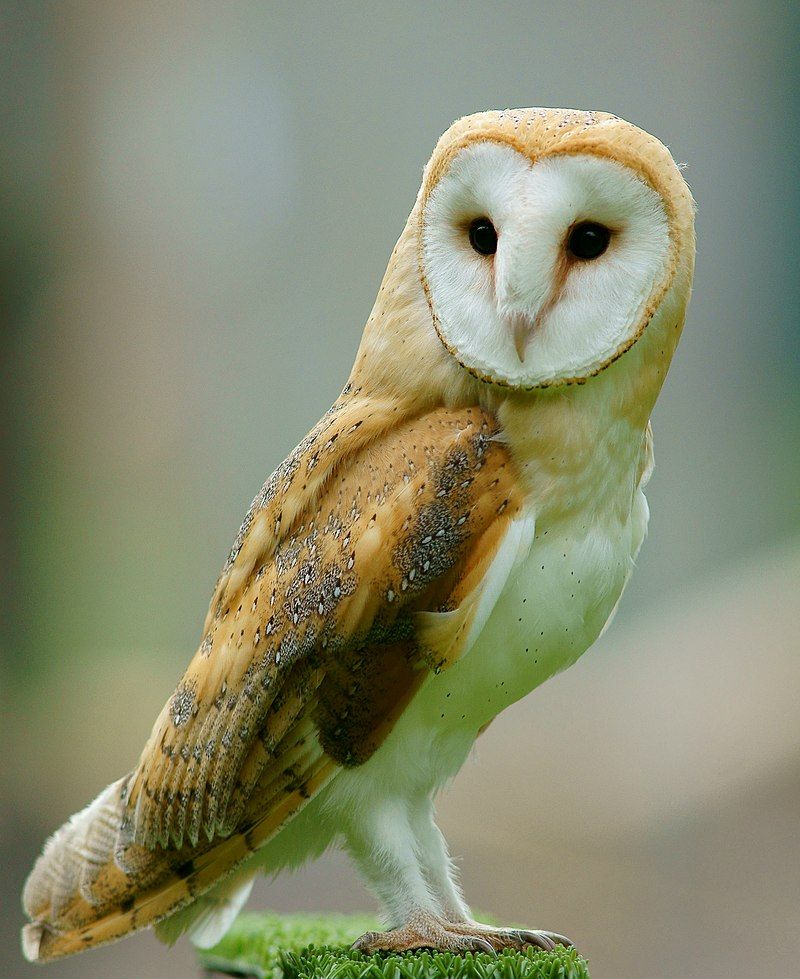
The barn owl is a species of owl that is found on six of the seven continents and is one of the most widespread of all bird species. Its range encompasses almost every region of the world, with the exception of the polar regions, most of Indonesia, and some Pacific Islands.
It is found throughout Europe, Africa, Australia, and North and South America, and extends through to Central Asia, up to the Himalayas.
It is an incredibly adaptable species and is able to thrive in a variety of environments, including open fields, grasslands, wetlands, woodlands, and even urban areas.
Its diet consists mainly of small mammals, such as mice and voles, as well as amphibians, reptiles, and invertebrates. Due to its wide range, the barn owl is an important part of many ecosystems and can be a great indicator of the health of its environment.
| Kingdom | Animalia |
| Phylum | Chordata |
| Class | Aves |
| Order | Strigiformes |
| Family | Tytonidae |
| Genus | Tyto |
| Species | T. alba |
20. Snowy Plover
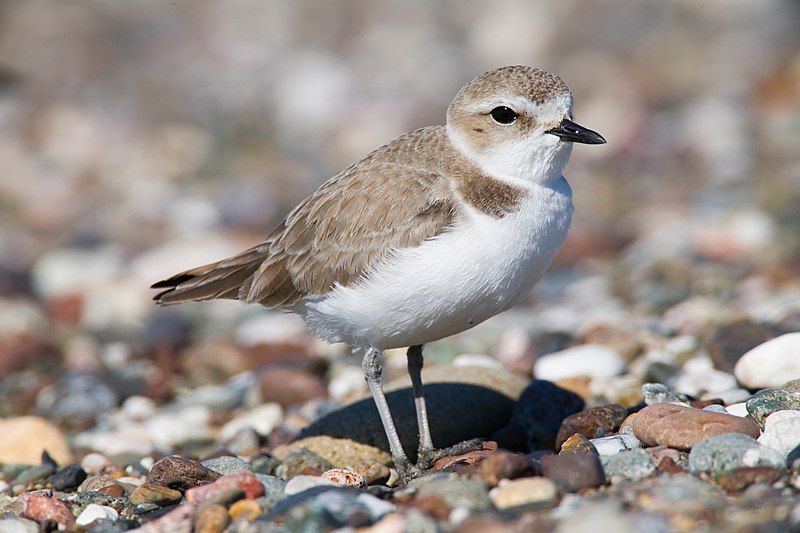
The snowy plover is a small wader bird in the plover family, usually measuring between 5-7 inches in length. It is found in the southern and western parts of the United States, as well as the Caribbean, Ecuador, Peru, and Chile.
This species was formerly thought to be a subspecies of the Kentish plover, however, it is now known to be a distinct species of its own. The snowy plover is a shore-dwelling bird that typically nests in sandy, sparsely vegetated areas near the coast.
It has a mottled brown and white plumage, with a white-ish belly and chest. Its beak is black and its legs are typically a yellowish-brown color.
The snowy plover feeds on insects, crustaceans, and other small invertebrates that it finds in the sand or mud. The snowy plover is listed as vulnerable by the International Union for Conservation of Nature and Natural Resources (IUCN) due to habitat loss and human disturbance.
Populations in the United States have declined dramatically due to human-caused disturbances such as beach development, recreational activities, and predators.
Conservation efforts have been implemented to protect the species, including habitat protection, predator control, and captive breeding programs.
| Kingdom | Animalia |
| Phylum | Chordata |
| Class | Aves |
| Order | Charadriiformes |
| Family | Charadriidae |
| Genus | Charadrius |
| Species | C. nivosus |
21. Red-Winged Blackbird
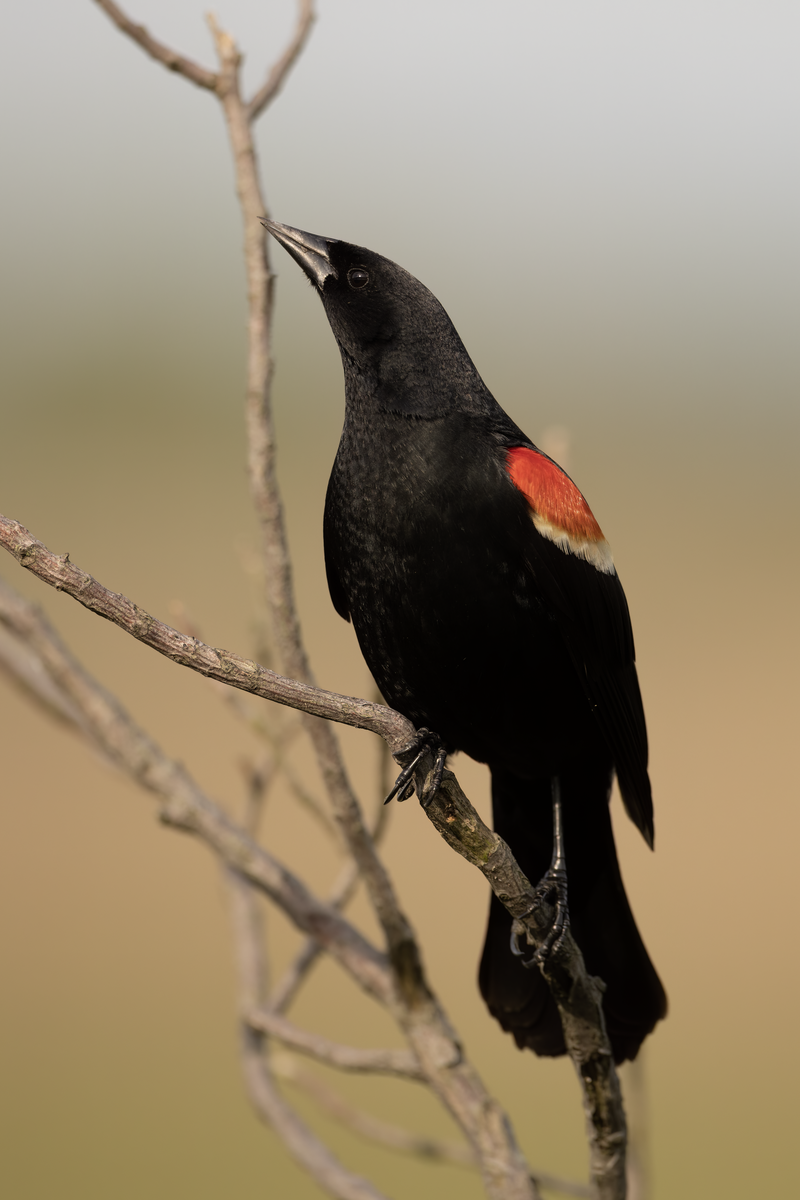
The red-winged blackbird is a member of the Icteridae family of birds, which are also known as passerine birds. These birds can be found throughout most of North America and an extensive portion of Central America.
They are a small songbird with a signature red wing patch, which is what gives them their name. The male of the species is a glossy black color, with red and yellow patches on their wings and tail.
The female is a mousy brown color, with streaked or spotted feathers. Red-winged blackbirds are omnivorous and feed on both insects and seeds. They are most commonly found in open habitats such as wetlands, meadows, and agricultural fields.
They are also known for their loud and melodious songs, which they use to attract mates and defend their territories. The red-winged blackbird is an important species in the wildlife and ecology of North America and Central America.
They provide important food sources for other animals such as hawks, owls, and even some mammals. They are also an important seed disperser, aiding in the growth and spread of plants. Furthermore, their nests provide shelter and safety for other species of small birds.
| Kingdom | Animalia |
| Phylum | Chordata |
| Class | Aves |
| Order | Passeriformes |
| Family | Icteridae |
| Genus | Agelaius |
| Species | A. phoeniceus |
22. Yellow-Rumped Warbler
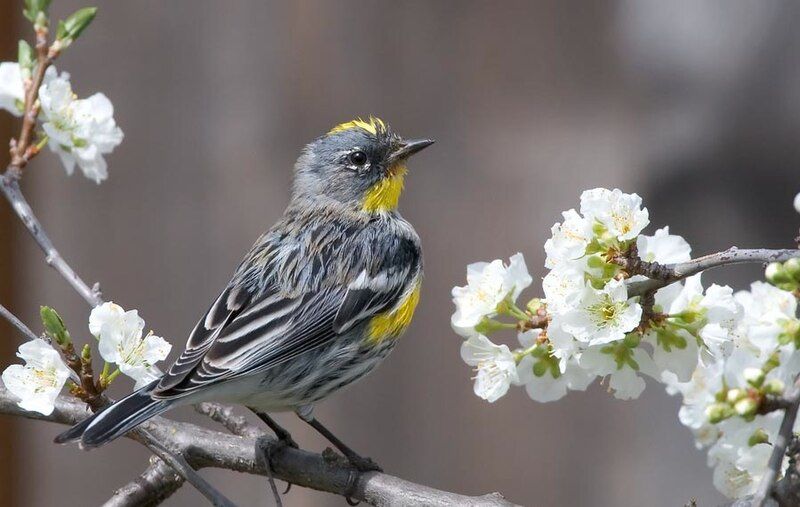
The yellow-rumped warbler is a migratory bird species that is regularly seen in North America. It is one of the most common songbirds on the continent and can be found in a variety of habitats, from forests to grasslands.
The males have a distinctive yellow throat and rump, while the females are more dull in color. During spring migration, large flocks of yellow-rumped warblers can be observed in many parts of the continent.
They feed mainly on insects and berries, and their loud, chirping songs can be heard throughout the summer months. They are strong fliers and can easily cross large distances during migration. The yellow-rumped warbler is an important part of the continent’s birdlife.
| Kingdom | Animalia |
| Phylum | Chordata |
| Class | Aves |
| Order | Passeriformes |
| Family | Parulidae |
| Genus | Setophaga |
| Species | S. coronata |
Conclusion
Birds in Nipomo have adapted to the natural environment and are thriving in the area. They are an important part of the local ecosystem and provide valuable services such as pollination, seed dispersal, and insect control.
Furthermore, they are an important part of the local economy through bird watching and other activities. Therefore, it is important to protect and conserve the birds of Nipomo in order to maintain the delicate balance of the local environment.